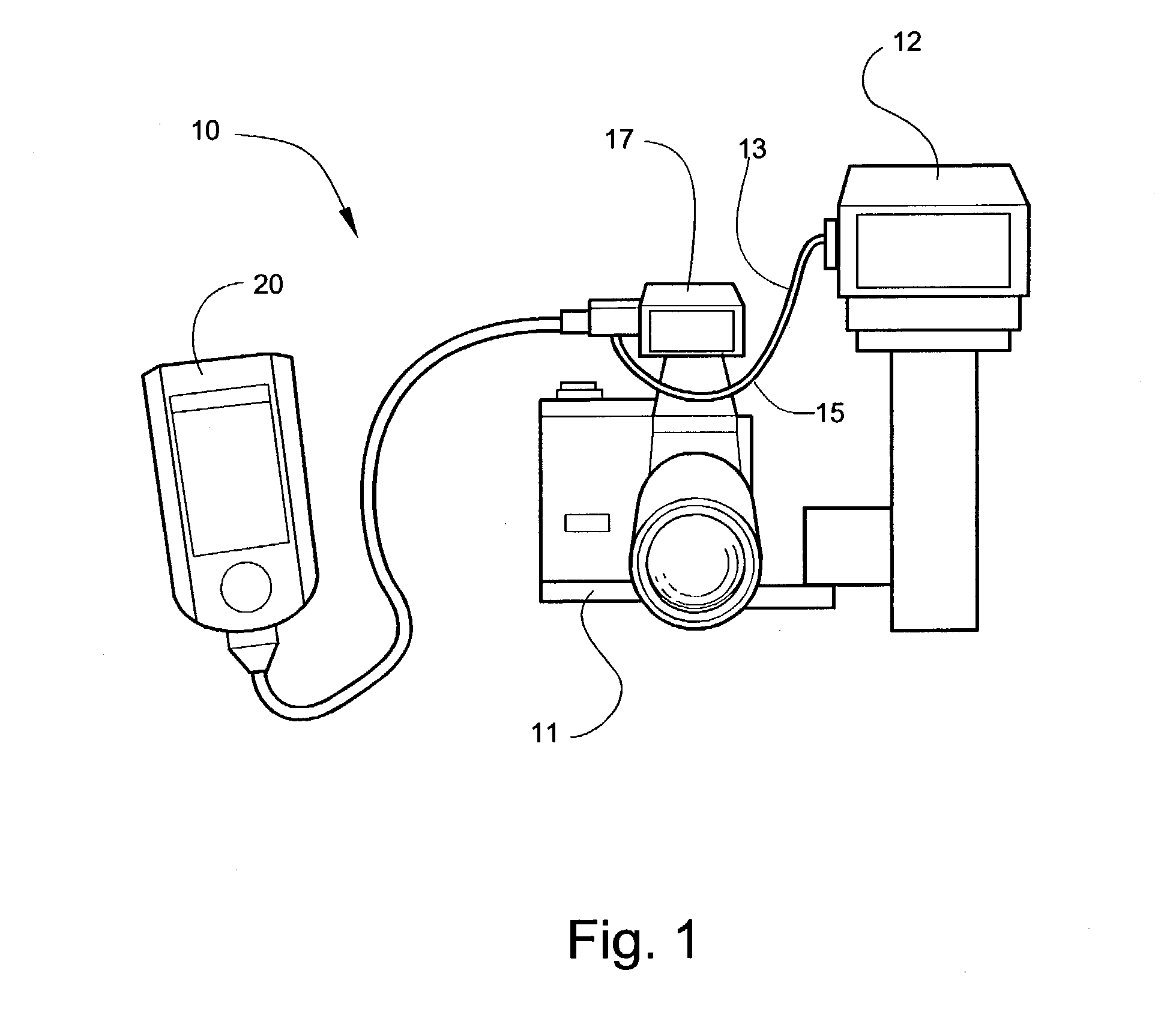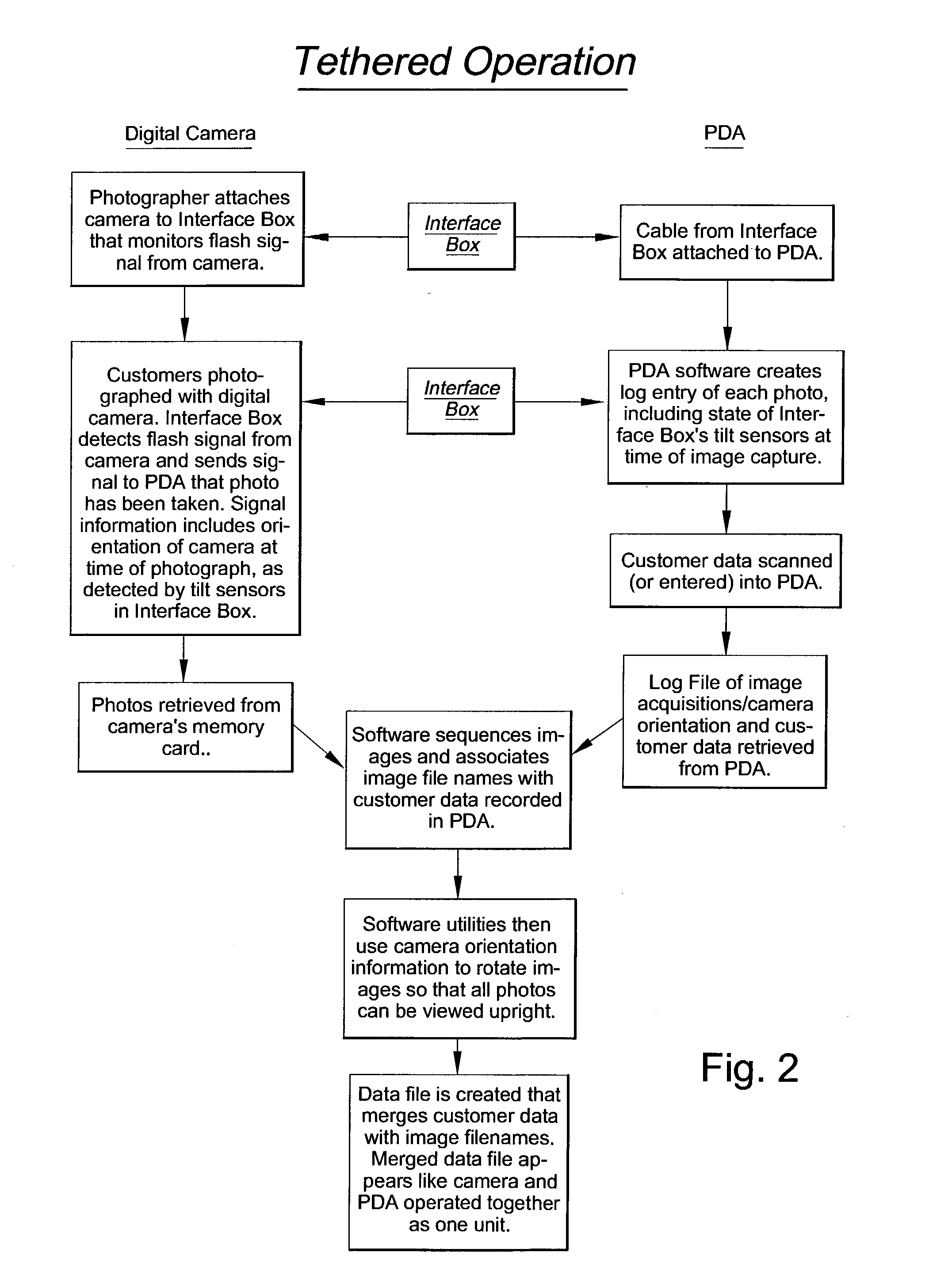Digital camera/computer synchronization method
a technology of digital cameras and computers, applied in the field of digital cameras/computer synchronization, can solve the problems of insufficient portability of systems for roving photographers, failure of companies, and inability to take large events where several hundred photographs are taken
- Summary
- Abstract
- Description
- Claims
- Application Information
AI Technical Summary
Benefits of technology
Problems solved by technology
Method used
Image
Examples
Embodiment Construction
Camera / PDA Synchronization
[0030] Referring now specifically to the drawings, one typical preferred configuration according to the present invention is illustrated in FIG. 1 and shown generally at reference numeral 10.
[0031] When a photographic image is acquired by a digital (or film) camera 11, a flash circuit is closed. The closing of this circuit is used to either fire an internal flash built into the camera, or to trigger an external flash 12 via either a cord 13 plugged into a PC connector built into the camera 11, or a standard mounting shoe 15 (hotshoe) located on top of the camera 11. An interface box 17 is provided that monitors the camera flash circuit and sends a signal to an external computing or storage device that the camera's flash circuit has been triggered.
[0032] The apparatus 10 can operate in one of three ways to sense this event:
[0033] 1) By plugging the interface box 17 into the PC connector built into most prosumer and professional digital cameras. The interface...
PUM
 Login to View More
Login to View More Abstract
Description
Claims
Application Information
 Login to View More
Login to View More - R&D
- Intellectual Property
- Life Sciences
- Materials
- Tech Scout
- Unparalleled Data Quality
- Higher Quality Content
- 60% Fewer Hallucinations
Browse by: Latest US Patents, China's latest patents, Technical Efficacy Thesaurus, Application Domain, Technology Topic, Popular Technical Reports.
© 2025 PatSnap. All rights reserved.Legal|Privacy policy|Modern Slavery Act Transparency Statement|Sitemap|About US| Contact US: help@patsnap.com



